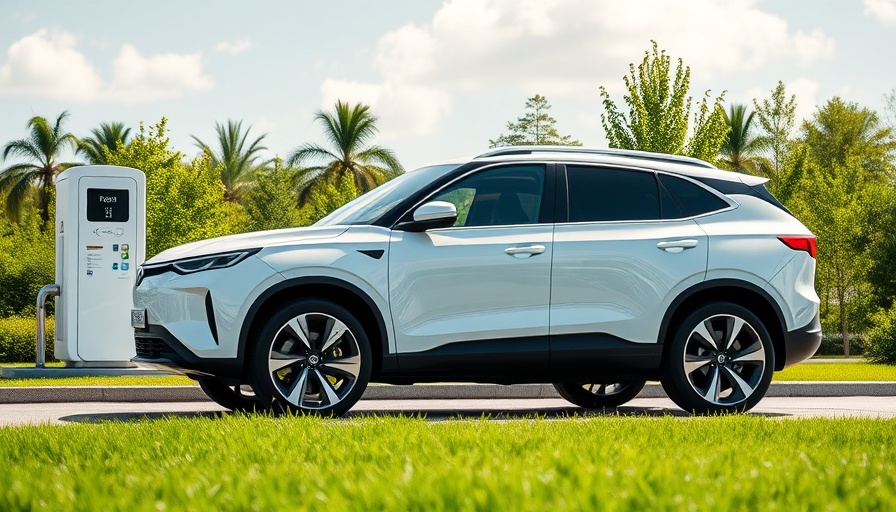
The Electrifying Evolution of Convertibles
The automotive landscape is transforming, and few segments are witnessing this change more than electric vehicles (EVs). With an increasing focus on sustainability and performance, manufacturers are phasing out internal combustion engines (ICEs). This transition raises an intriguing question: where do convertibles fit into this electrified future? Historically, convertibles have been beloved for their thrill of open-top driving, yet their journey in the EV world faces challenges that go well beyond just aesthetics.
Challenges in Crafting Electric Convertibles
One of the most significant hurdles for electric convertibles is their design complexity. Convertibles must prioritize structural integrity while accommodating heavier battery packs, which directly affects vehicle weight and performance. Safety standards add another layer of difficulty; manufacturers must ensure that these open-top vehicles meet stringent regulations without compromising on style or comfort.
Current Offerings: The Best Electric Convertibles Available Now
Despite these challenges, a handful of electric convertibles are emerging in the market. Notable models include the GMC Hummer EV, which combines robust performance with an exhilarating driving experience. This remarkable SUV offers a base price of $96,550 and a powerful 570 horsepower, redefining what motorists expect from electric performance vehicles. Its four-wheel-drive capability and decent fuel economy ratings further make it an attractive option for those seeking innovation without sacrificing practicality.
A Market Shift to SUVs and Crossovers
Interestingly, the push for electrification has led manufacturers to prioritize crossovers and SUVs, which dominate the market today. With their higher ride heights, spacious interiors, and family-oriented designs, these vehicles have largely eclipsed traditional convertibles. While this is a sound business decision given consumer demand, it does leave a gap for enthusiasts eager for a return to open-air motoring.
Future Predictions: The Road Ahead for Electric Convertibles
As manufacturers continue to innovate, the prospect of electric convertibles might not be as bleak as it seems. Industry experts predict that as battery technology improves and design challenges are overcome, we might soon see groundbreaking iterations of convertibles infused with cutting-edge technology and performance features. Noteworthy trends include enhanced infotainment systems and improved fuel efficiency comparisons, crucial for attracting eco-conscious buyers.
Counterarguments: Why Convertibles May Remain Niche
Despite advancements, some experts posit that the convertible segment may stay niche due to practicality issues. As consumers increasingly gravitate towards SUVs and all-electric vehicles, the allure of open-air driving could wane, relegating convertibles to a seasonal or luxury offering. Thus, while we may see an emergence of electric convertibles, their volume in the market could remain limited compared to larger vehicle types.
Consumer Insights: What Buyers Are Looking For
Potential buyers are considering several factors before investing in electric vehicles, particularly convertibles. They are assessing various aspects such as safety ratings, the reliability of electric vehicle technology, and overall ownership costs. Features like advanced car technology and performance analysis become pivotal in decision-making, influencing not just the choice of model but how the vehicle fits into a holistic automotive lifestyle.
Planning for Purchase: Making Thoughtful Decisions
For car enthusiasts and everyday consumers alike, understanding the market and the nuances of electric vehicles is crucial. Utilizing tools like car comparison resources and maintaining awareness of new car reliability ratings empowers buyers to make informed decisions. This enables potential owners to not only consider immediate costs but also long-term value and depreciation trends.
Conclusion: Embrace the Change
The electric vehicle revolution is unyielding, and with it, the fate of convertibles hangs in the balance. As technology advances, the outdated views on practicality may shift, allowing for a resurgence of these thrilling vehicles. With careful consideration and planning, buyers can prepare for the next generation of driving that aligns with their preferences while contributing to a sustainable future. Stay tuned as we witness the fascinating evolution of electric convertibles and embrace the exciting possibilities they present.
 Add Row
Add Row  Add
Add 




Write A Comment